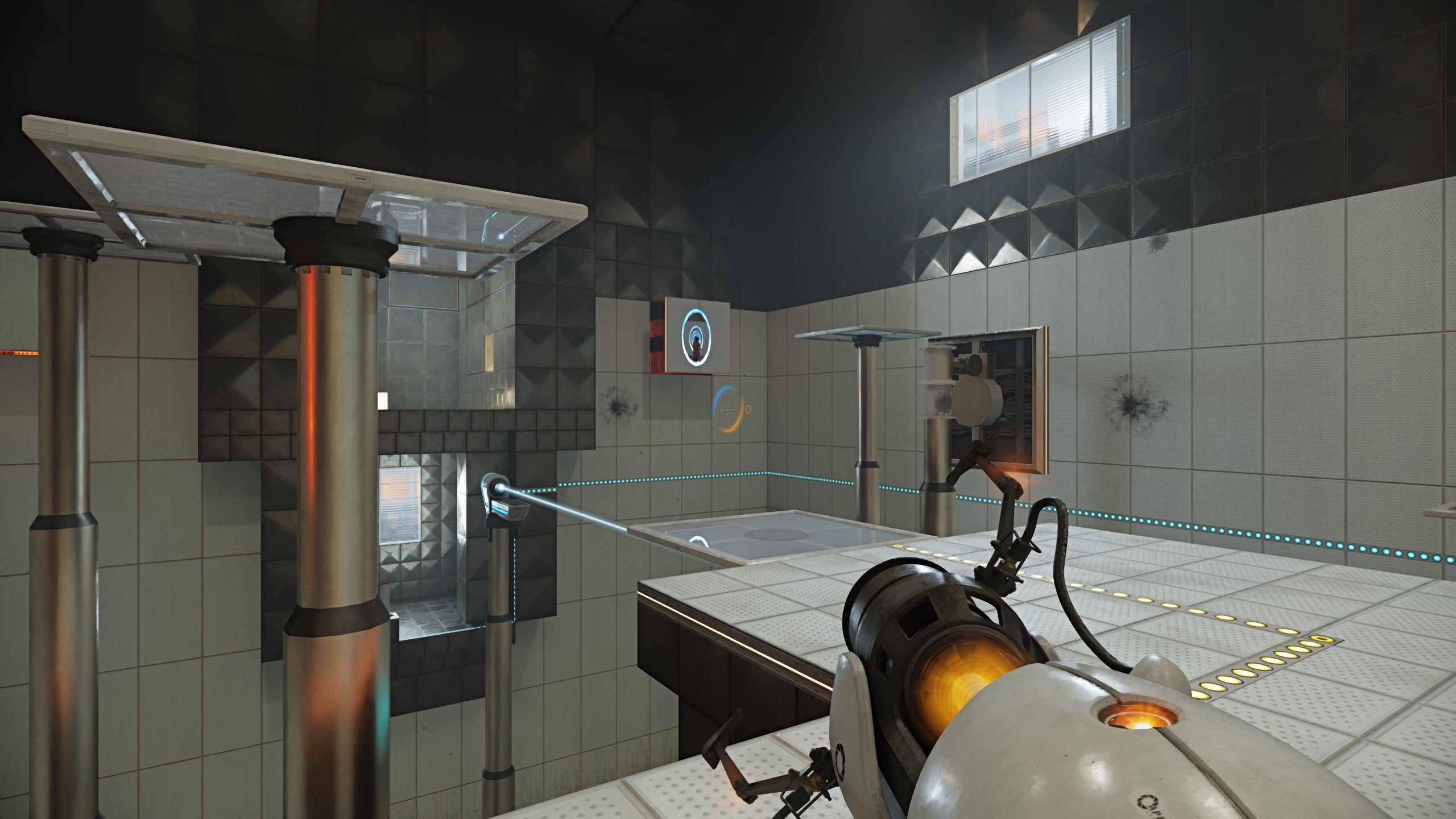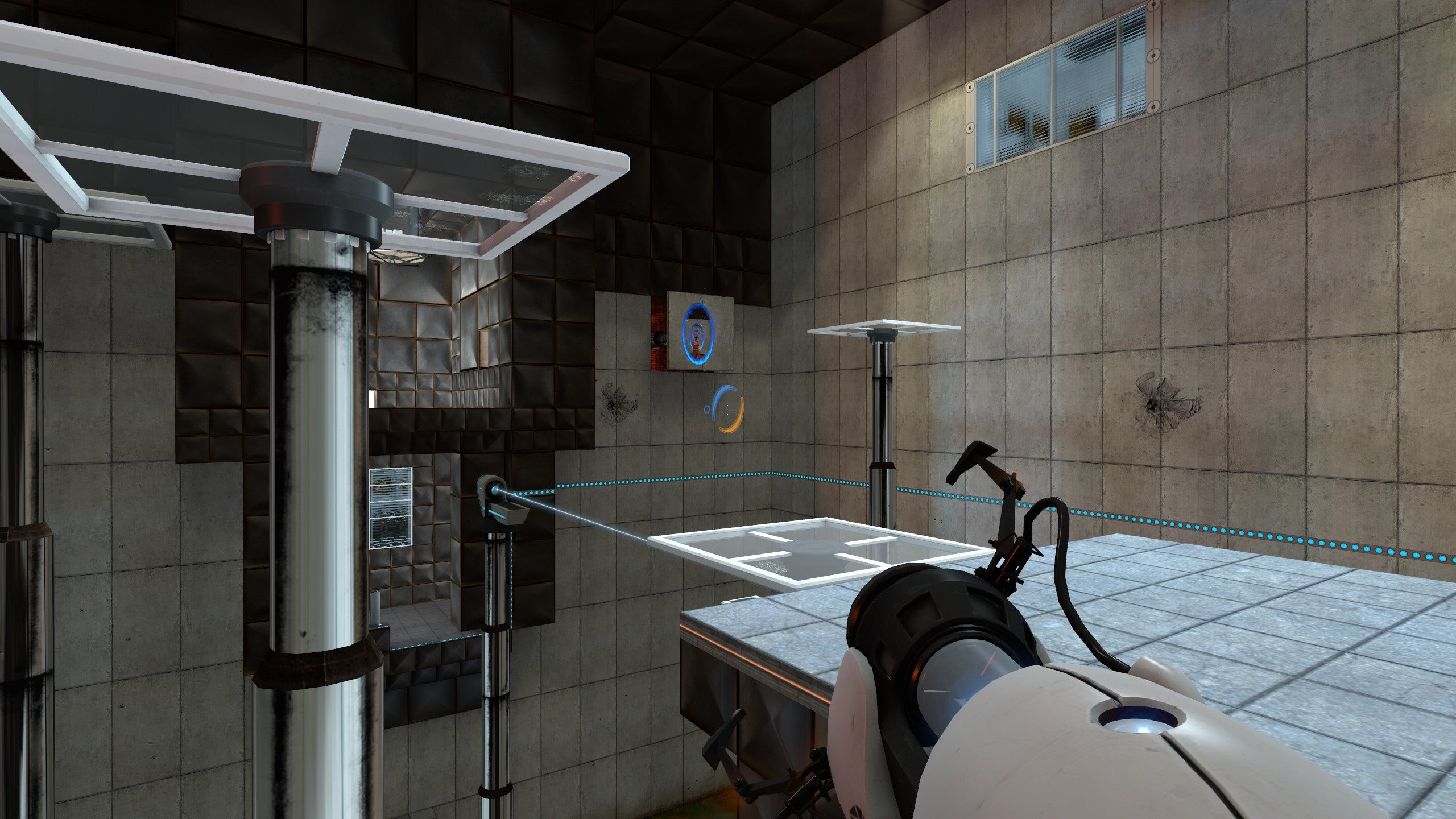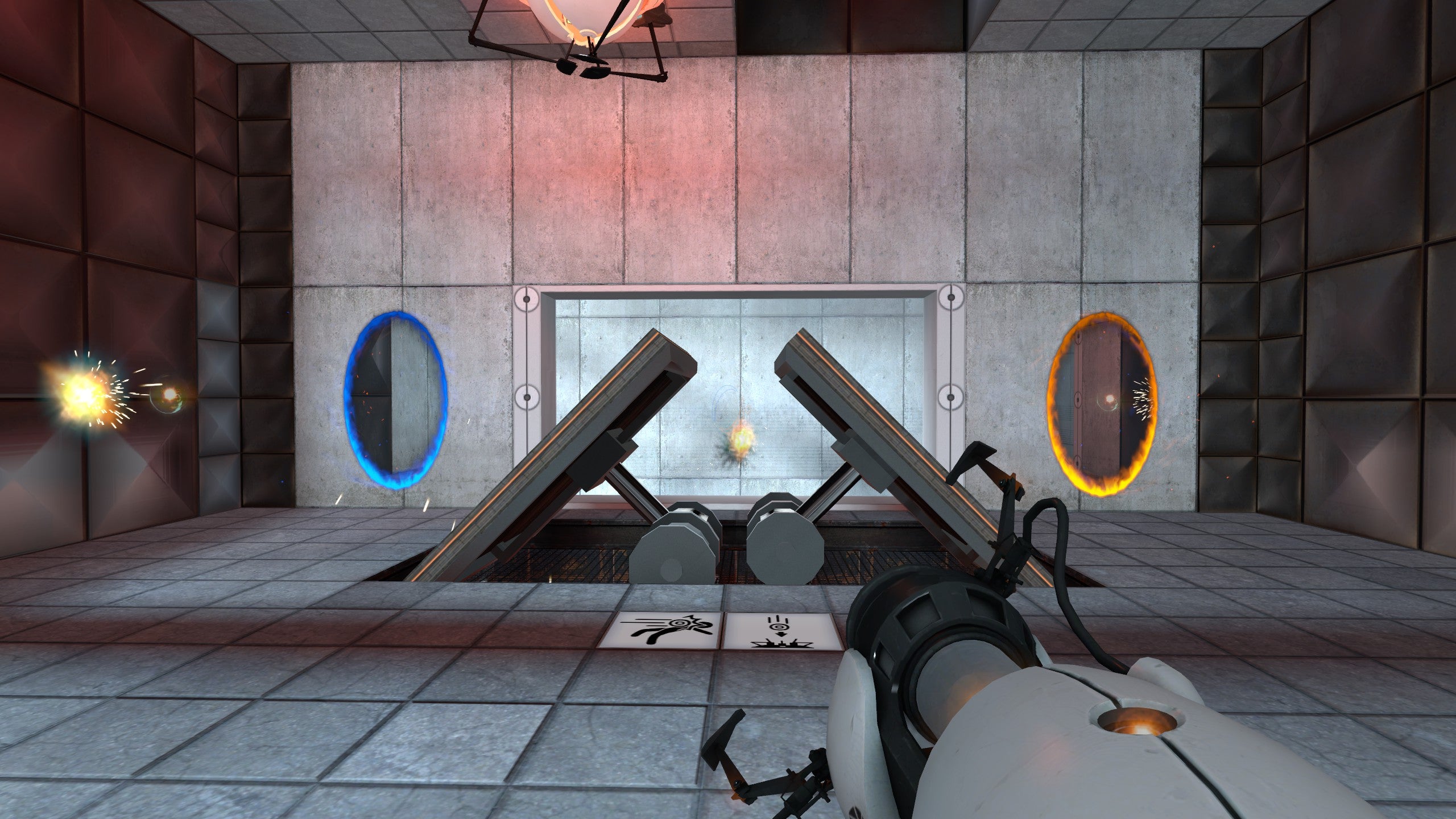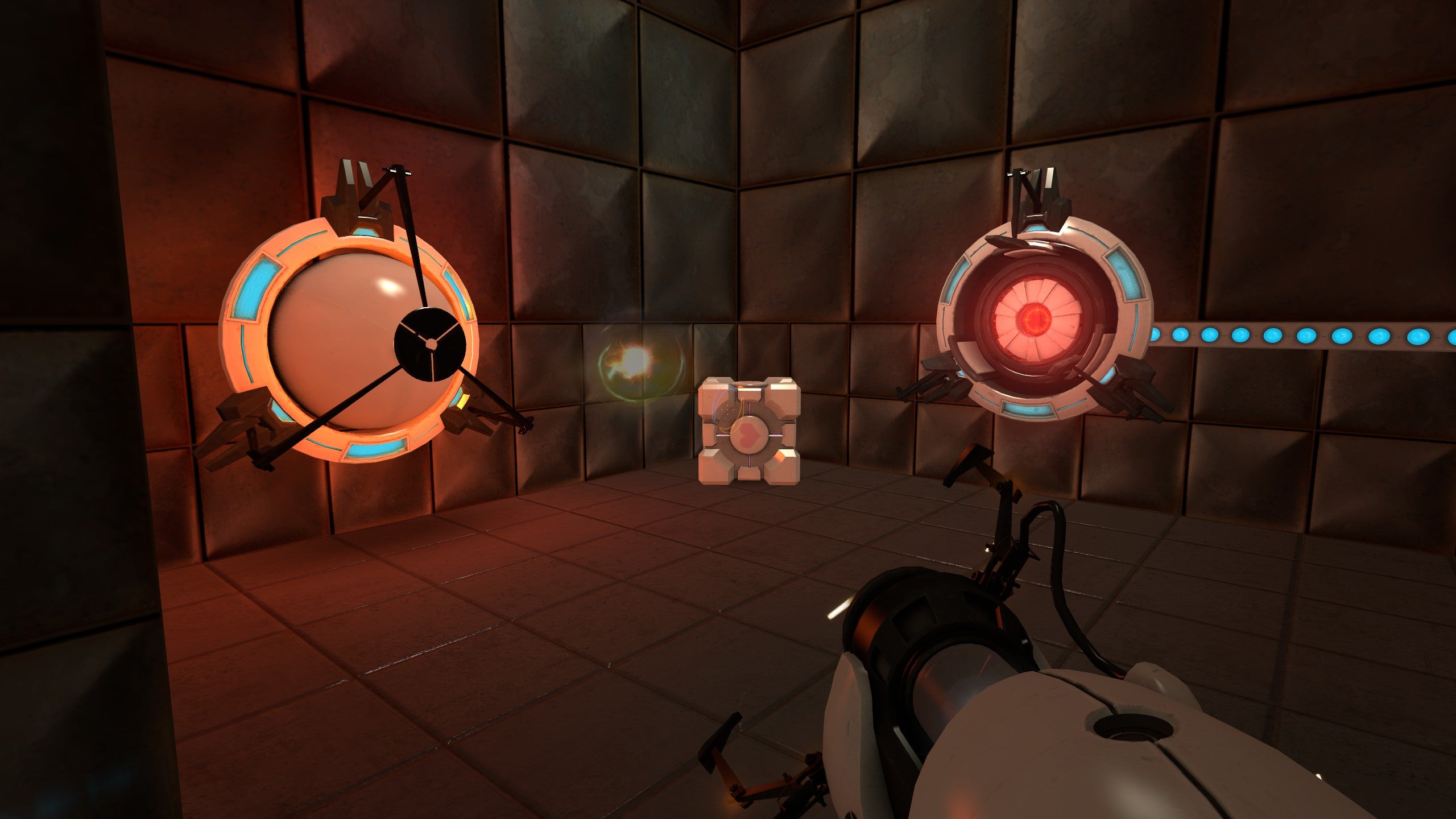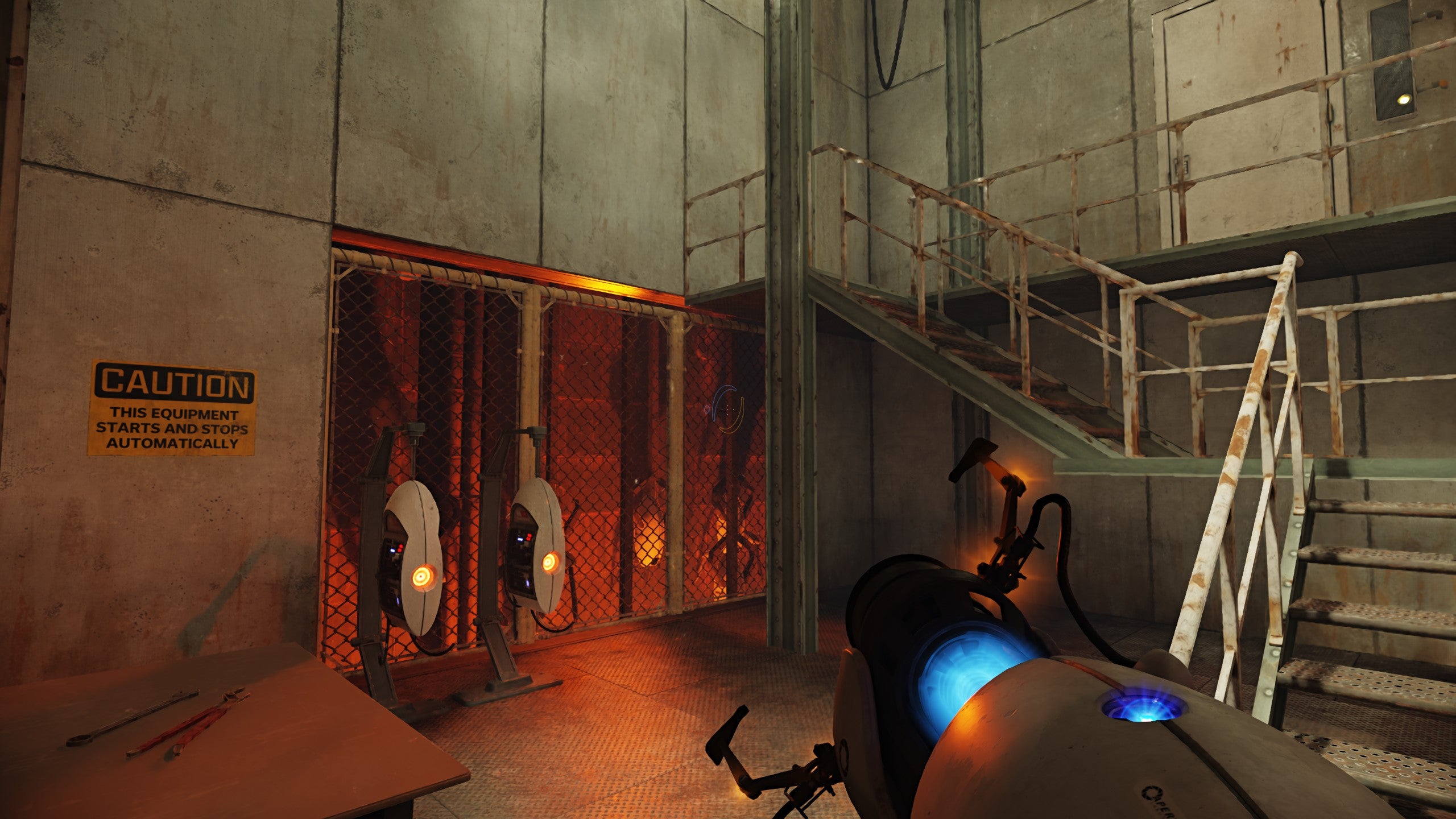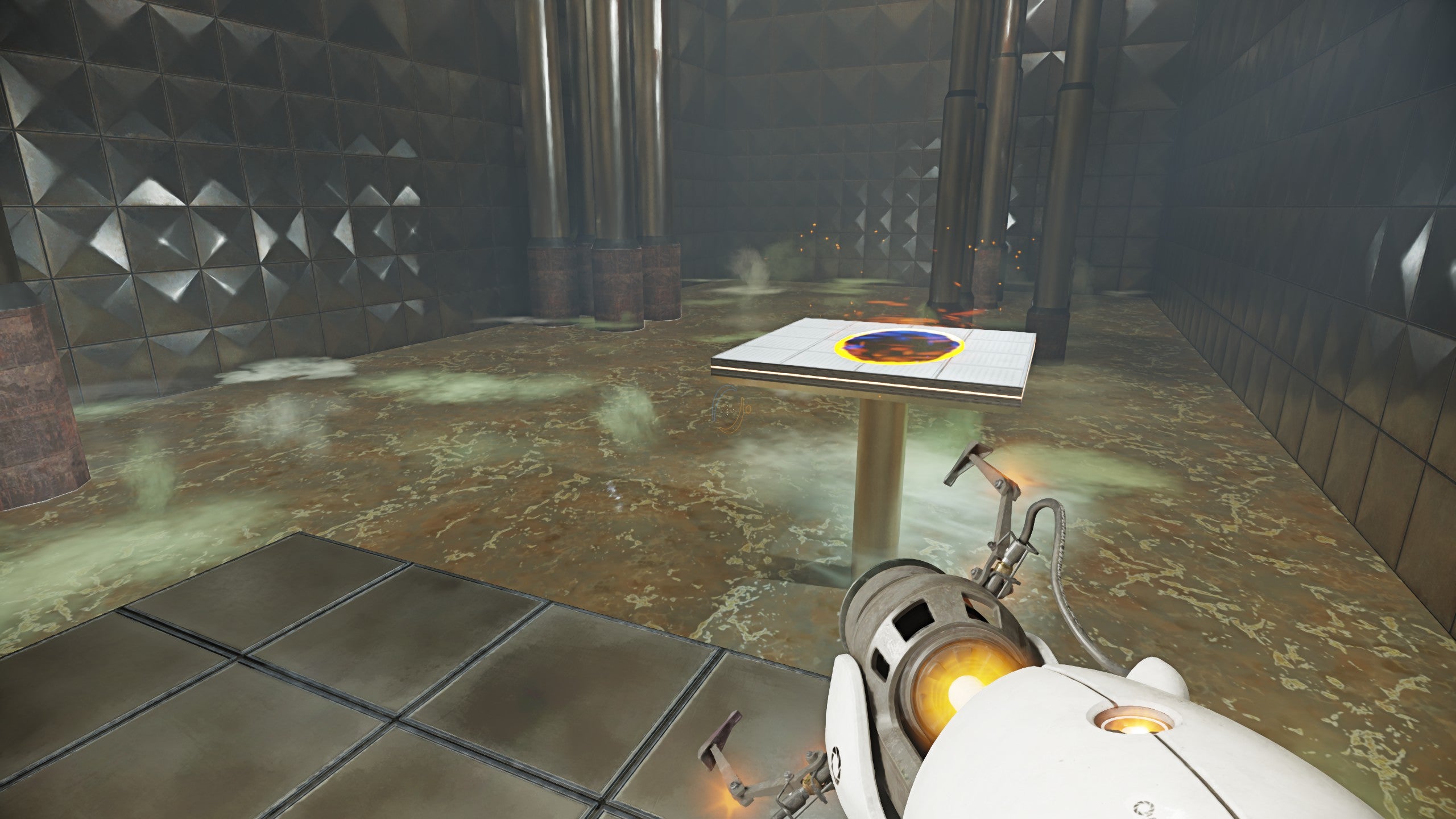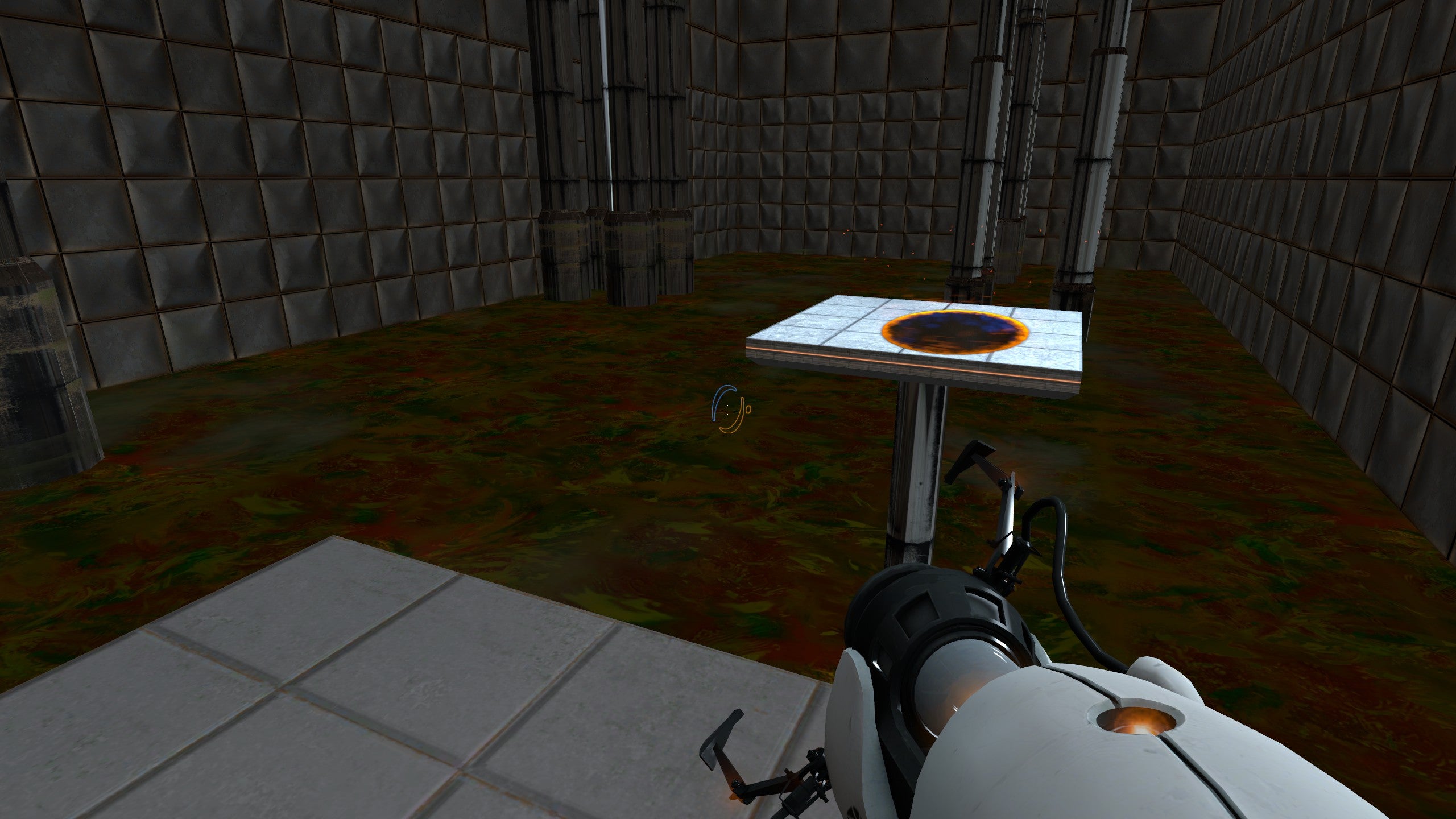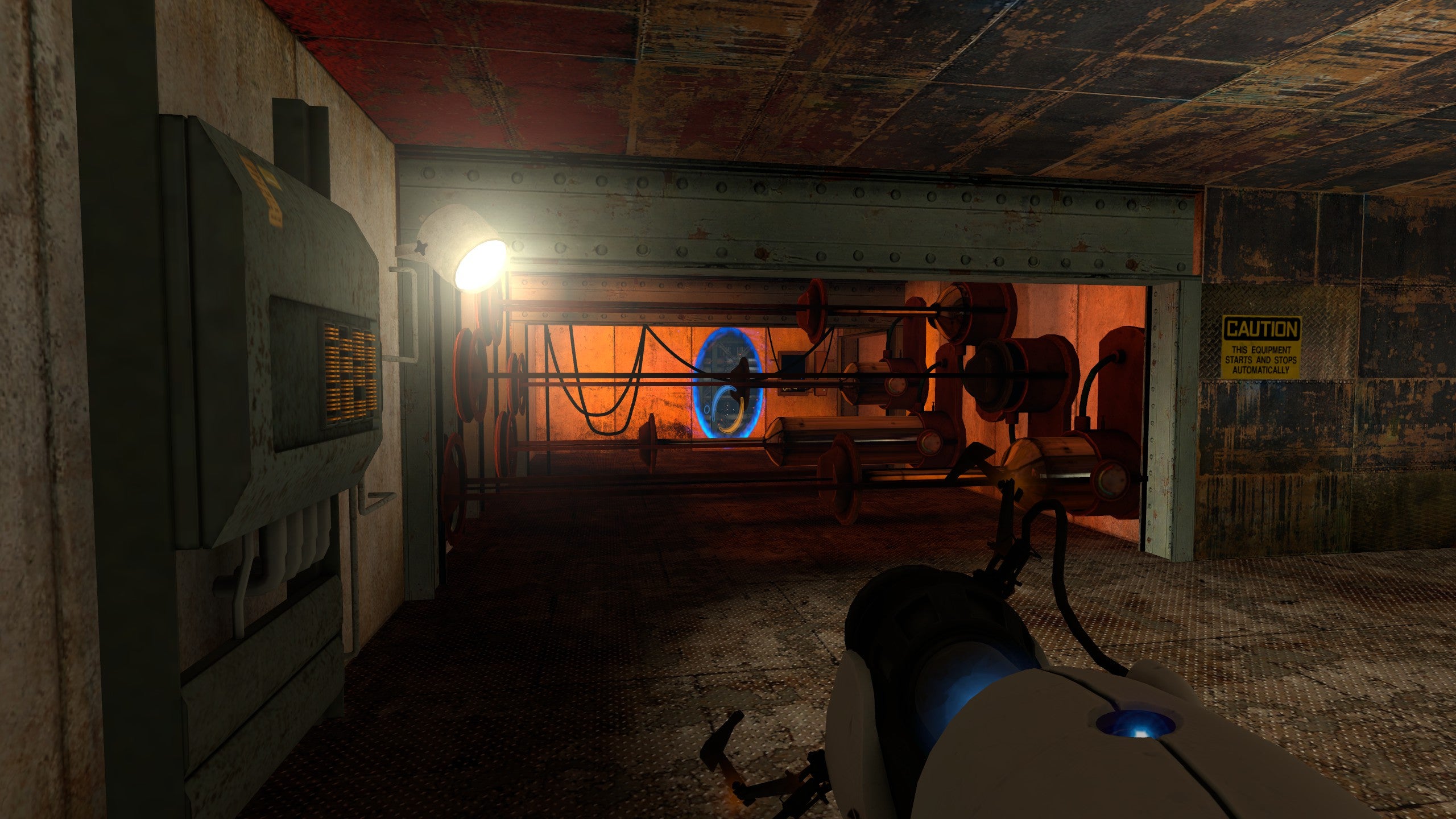Admittedly, that’s in spite of some shortcomings, including utterly broken performance on even the strongest Radeon RX graphics cards. Equip yourself with RTX hardware, however, and this free mod is a real Christmas treat.
If you missed the RTX 40 series launch event at which it was revealed, RTX Remix is essentially a modding platform that makes it possible to add ray tracing and Nvidia DLSS upscaling to certain Direct 8 and DirectX 9 games. It includes tools for replacing textures and models too, so could be thought of as a remastering engine: old game goes in, some buttons are pressed, shiny new ray traced version comes out.
It’s obviously more complicated than that, but in the hands of talented modders, RTX Remix could be a very powerful collection of tools indeed. And to show what’s possible, Nvidia’s in-house Lightspeed Studios (who also made Quake II RTX) have wielded them to create Portal with RTX.
It rocks. Not only is the whole game now lit and shadowed with path tracing, the most complex and visually complete subset of ray tracing that’s currently technically possible, but Lightspeed Studios have overhauled textures and models throughout. The result is a remaster that’s not far off looking like a shot-for-shot remake, with effects that actually serve the game rather than acting as technoswagger for its own sake. White lights from the test chambers’ observation rooms are brighter and harsher, heightening the lab rat anti-fantasy. Flying energy orbs gain a dazzling glow, emphasising their electric lethality. Even the redesigned wall and floor textures have more of a laboratory-appropriate sterility to them, without being so pristine as to undermine Aperture’s figurative and literal grossness.
And in fact, Portal’s space-warping makes it an ideal showcase for ray tracing. I’ve seen plenty of twirling fan blade shadows and blooming lamps by now, but I’ve never stopped to marvel at an RT effect like I did the first time I saw a swath of light pour through one portal to reflect on surfaces around the second. And together with all the other little touches and tweaks, it’s not remotely incongruous to see in a 15-year-old game; ray tracing looks like it was always meant to be there.
RTX Remix isn’t available to everyone yet, but in the right hands it’s clearly dripping with potential for other impressive visual mods. Source Engine-focused YouTuber Richter Overtime has already piggybacked on Portal with RTX to get a glimpse of a ray traced Ravenholm in Half-Life 2, and provided modders don’t run roughshod over the art direction of originals, it’s tempting to imagine a library of remastered classics that don’t involve a publisher charging you £50 for entry.
Remember though, this is ultimately an Nvidia joint, and as brilliant as it is, Portal with RTX does have the slight whiff of trying to sell graphics cards as much as it is RTX Remix. For one thing, your only hope of truly high framerates is the latest RTX 40 series. With an RTX 4080, the cheapest of which are about £1,250, I could leave the ray tracing settings on Ultra mode while staying above 60fps at 4K and 120fps at 1440p – but that was only with DLSS 3 on its Performance setting, plus the AI frame generation feature switched on.
Older RTX cards must rely on an older version of DLSS, which means no extra generated frames. Combined with their lower overall horsepower, it’s a big challenge to get Portal with RTX running smoothly. Even the RTX 3090, again using DLSS Balanced, struggled to get above the 50-60fps range at 1440p with Ultra RT. You can lower these settings independently from the game’s own graphics options, by opening an almost hidden Remix menu with Alt+X, and that’s an absolute necessity on the more mainstream Ampere GPUs. The RTX 3070 could just about tick along at 30-40fps, but only with Ultra settings dropping to High, and with DLSS Performance once again.
That’s almost exactly the same as my results with the Turing-era RTX 2080 Ti, so even deeper cuts are necessary if you’re on something like an RTX 2060 or RTX 2070. 1080p might be your limit with those, though at any resolution, you can get a decent performance bump by dropping the minimum number of ray traced light bounces to 0 and the maximum to 2. Don’t set the latter any lower than this, mind you, as it will make a lot of areas look inexplicably dark. It’s also fine to stick with DLSS on Performance mode, as it’s much faster than Balanced mode while – thanks to Portal’s naturally clean lines – rarely looking as pixelly as it does in most DLSS-supporting games.
Sadly, there’s no saving performance on AMD cards. Even on the brand-new Radeon RX 7900 XT, currently AMD’s second most powerful gaming GPU, Portal with RTX struggled to break 20fps at 1440p. The lack of a compatible upscaler is the least of its problems, too: in the footage below, you can see not only my rising bewilderment, but also how aliasing gets almost comically out of control and portals fail to render their exits.
Best case scenario, this is an issue specific to Portal with RTX, and while there’s no way in hell future RTX Remix mods will support FSR, they might still be able to reach 45fps on a high-end AMD GPU without reality breaking down. With a harder head, I’m worried that Remix mods will simply not work on Radeon hardware as a matter of course. That would make economic sense for Nvidia, I’m sure, but wouldn’t exactly be in the spirit of PC gaming. And that’s something rarely said about, y’know, mod tools.
All that said, if you can play Portal with RTX, I still think it’s too good to pass up. It’s a visually sumptuous (yet respectful) redux of one of the best games ever made, costs nothing when you already own the original, and is easily installed through Steam. Just resist the urge to splash out on an RTX 4090 when performance takes a dip.
